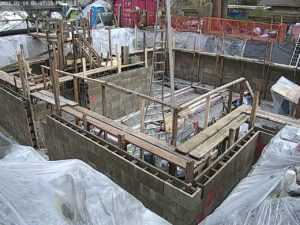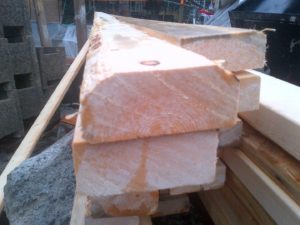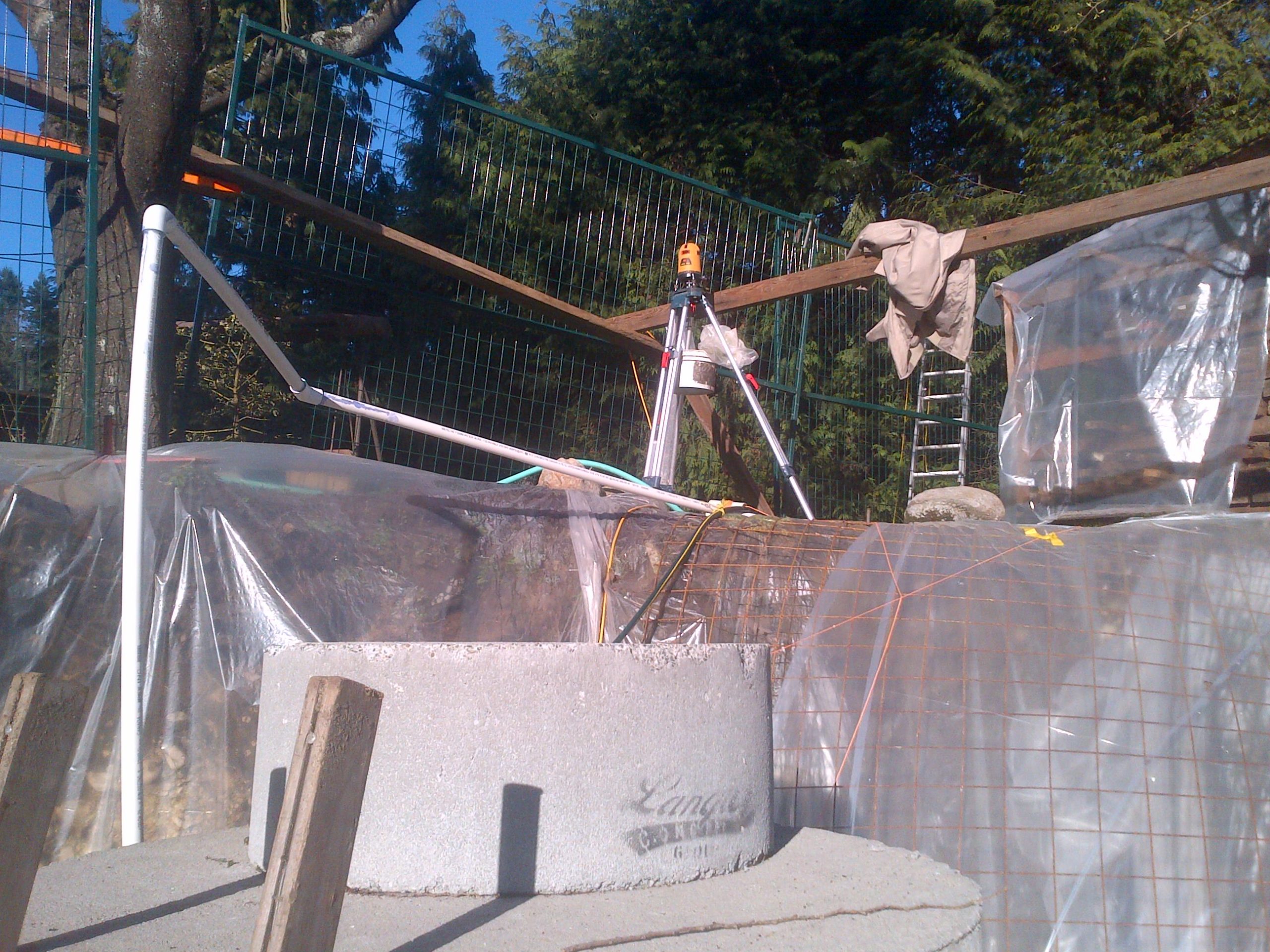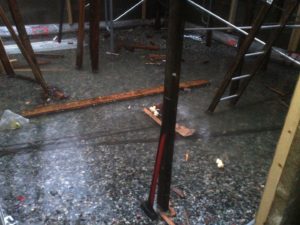Altitude Sickness
This last week has been a mixed bag of activities. I started Monday with the raising of the scaffold to the final pouring height, which will also be used to place the last two rows of blocks and to form the top of foundation wall curb. I have been working on it all week and had the basic structure in place by Friday afternoon.
By WorkSafe standards, you do not need a guard rail if less than 10′ off the ground, but I am installing one anyway. I have a healthy fear of heights if there is a strong fall hazard. I even get nervous if I look out a cantilevered window in a very tall building. So, when I was standing on the newly raised planks, I felt very uneasy at the much higher altitude. As soon as I installed a partial guard rail, I was at ease again, so I will spend Monday putting up a guard all the way around the perimeter. I am sure it will also make the placers more at ease which in the end will make everyone safer.
I do however continue to be amazed at the amount of time the scaffolding is taking me. It clearly takes more time doing it as one person, but I am also making them REALLY sturdy due to my discomforts up high. The task is also incorporating the bracing that will be needed to plumb the walls prior to the pour, which adds to the volume and complexity of the system.

Finally, I could have completed the task faster if I had gone out and bought longer wood, but I have been using salvaged wood up to this point and indeed I bought the first dimensional lumber only this week. I picked up some 10′ 2×4’s and boy is there a big difference in quality between what was in the 60 year old house and the new lumber. Out of 30 pcs, there was not one with four corners. Each piece had heart wood on one side and bark on one corner. They were clearly cut from fairly small pine trees that would only yield 2-4 pieces of lumber per diameter. What was scary is that I lost count at over 30 year rings on these small trees. Not sure how sustainable the timber industry is if after 30 years the trees are only 6″-8″ in diameter after that period of time.

I also spent some time this week designing the routes for the HRV supply and exhaust ducts. This has proved to be a very difficult task. I have 12″ TriForce Open Web floor trusses which allow for only 7.25″ openings for ducts, so I am using 7″ trunks (which was close enough to the ideal 8″ to keep the HRV designer happy). But with these sizes, there is no way to route both ducts and plumbing in the same bays or to intersect these two systems. I am just about finished a design and have been able to route this all without any significant bulkheads. I have been fortunate in this regard and have been able to utilize a couple of dropped ceilings to run the intersecting services. My advise would be deeper floor trusses if you can at all swing it. I was restricted in my need to meet my local Municipal max roof height requirements of 26′ from grade.
This leads me to the final significant task of the week. There has been a snafu I have been aware of since we finished digging the pit and installed the storm sump late last summer. We are too low!

In North Vancouver, your max roof height is measured from grade, and grade is determined by taking the lower of the averages of the front two sides of the house being torn down, from the averages of the back two corners. The problem is that when the property was surveyed, there had already been some activity around the property to salvage plant material. The result was that the surveyors were measuring a localized depression and I ended up with an average at the back of the house that was a full 12″-16″ below what the previous finished grade was.
I have been ignoring the problem because I was fairly sure that the District would not play ball. But as I am coming down to the end of the foundation forming, this would be the last opportunity to address. I tried with the building department and no-go. They will only go by the survey. I then tried the Planning department and still no go. I would have to go back to Council for a revised Building Height Variance which would take months. It is sad that we could not come to a common sense solution to this and that the process is so rigid instead of concentrating on the spirit of why a rule was created in the first place. Even the surveyor (after referring to my and their photos) confirmed that their measurement points clearly did not represent the true grade and they will now look much more carefully at this issue in the future and advise their clients accordingly.
My advise to you as an owner builder or even regular builder – plant flowers gardens at the 4 corners of the house being torn down to establish whatever grade you are after before calling in the surveyor. I will now have to figure out a grading with Ron as we will have a shared sidewalk and cannot incorporate a retaining wall. Good thing I have a great neighbour.


